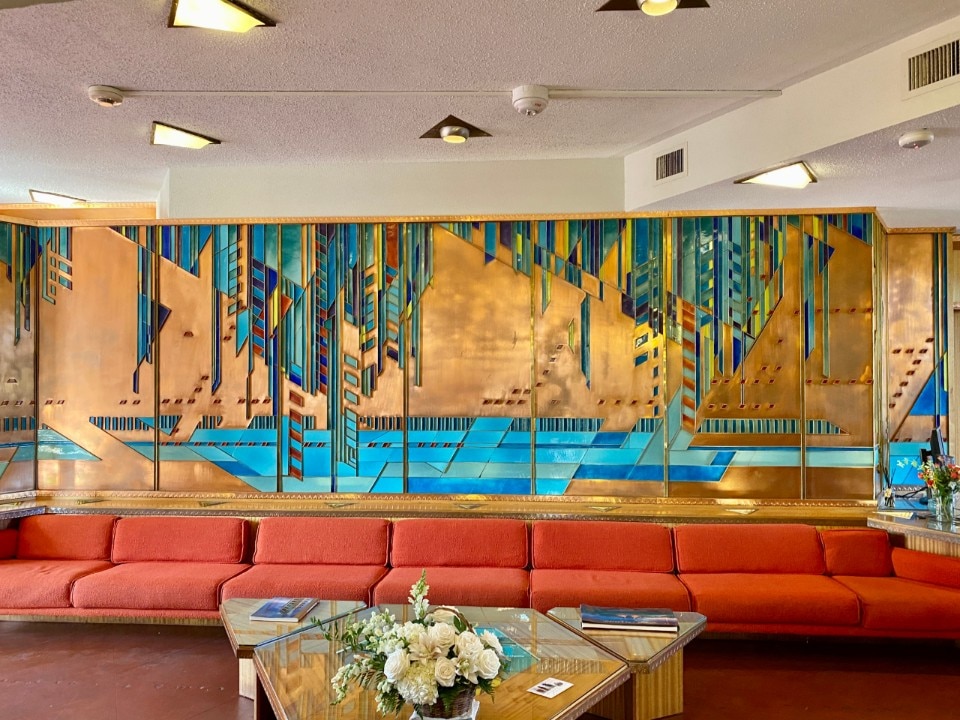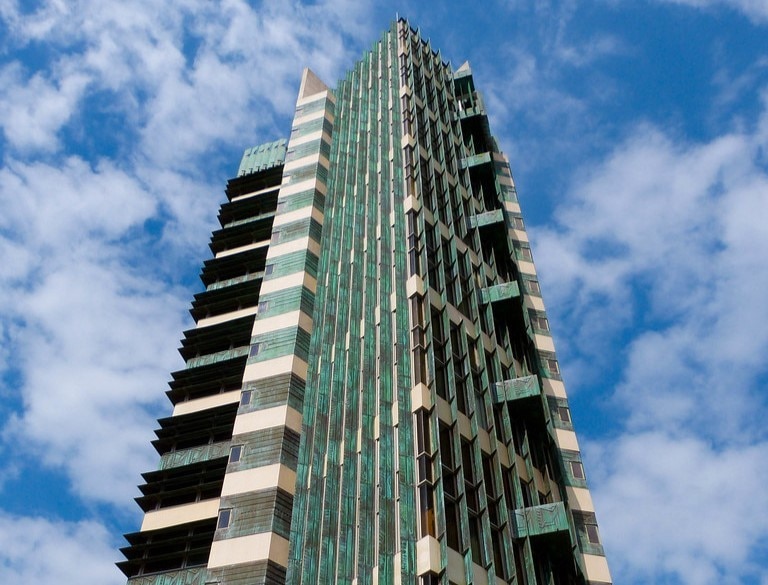The reasons of the market are sometimes ruthless, and even an architectural masterpiece such as the Price Tower in Bartlesville, Oklahoma, risks succumbing to the harsh law of profit: the only skyscraper built by Frank Lloyd Wright, and the only vertical oriented building he designed (together with the S.C. Johnson Wax Research Tower in Racine, Wisconsin), runs the risk of losing not only the opportunity to revive after years of financial agony, but also its identity.
The building, constructed in 1956, seems almost accidentally embedded in the city's skyline, far from the spotlight of other more attractive capitals of modern architecture. It was in fact an unforeseen gust of wind (raised by the Great Depression) that made the work originally conceived in the late 1920s by Wright for a residential tower in New York “land” on the Oklahoma prairies, and repurposed in Bartlesville as the headquarters of the H.C. Price Company oil company.
Translating the designer's organic lexicon, the volume is inspired by the shape of a tree, visible in the plans that spread out like branches starting from a single central block (the trunk) and in the green oxidised copper panel cladding that recalls leaves, so that Wright called the work a “tree that escaped from the forest” (of asphalt) in memory of the genesis of the project in Manhattan: an organism that, like a tree, lives on the synergy of all the elements that compose it, from the materials proposed with continuity between exterior and interior (copper panels, cement and aluminium finishes), to the unified design ranging from the architectural shell, to furniture and upholstery.

A gesamtkunstwerk (total work of art, Ed.) which, however, did not have an easy life.
Purchased in 1981 by Phillips Petroleum, which moved its offices and warehouses there, the building went through years of neglect until it was donated to the specially formed non-profit organisation Price Tower Arts Center, which reinvented it in 2001 as a museum of art, design and architecture, and introduced a restaurant, a boutique hotel and rented office space.
However, as recently reported by the New York Times, the high maintenance and operating costs and the debts incurred forced the organisation to put the building back on the market: in 2023, the private investor group Copper Tree Inc. took over the debt and bought the building for (only) USD 10 million, proposing to revitalise it as a new hub for technological start-ups, attracted by the more affordable cost of living in Oklahoma than elsewhere. But it turned out to be a step too far and, despite the initial enthusiasm, only a few months after the purchase, the investor entangled in debts and financial insolvencies declares his back against the wall and, in order to cash in, resorts to selling some of the building's furniture and artefacts (which are actually legally inalienable according to Frank Lloyd Wright Building Conservancy) striking a blow to the integrity of the work.

While lawyers work to negotiate the return of the pieces sold to art galleries (tables, stools and copper panels, an armchair, and what is believed to be the only example of an office noticeboard designed by Wright), Copper Tree Inc. unable to handle the hot stuff has decided to put it up for online auction in October like a vacant Burger King, with an opening bid of $600,000 for which some negotiations are ongoing.
While the provision of the spaces, certainly in excess with respect to the area's demand for a single investor, and the burdens related to their necessary preservation and enhancement may scare off possible buyers, there remains the hope that whoever takes over will be able to understand the uniqueness and “extra monetary” value of the building they are about to buy, before its ‘’lymph‘’ dries up permanently.


